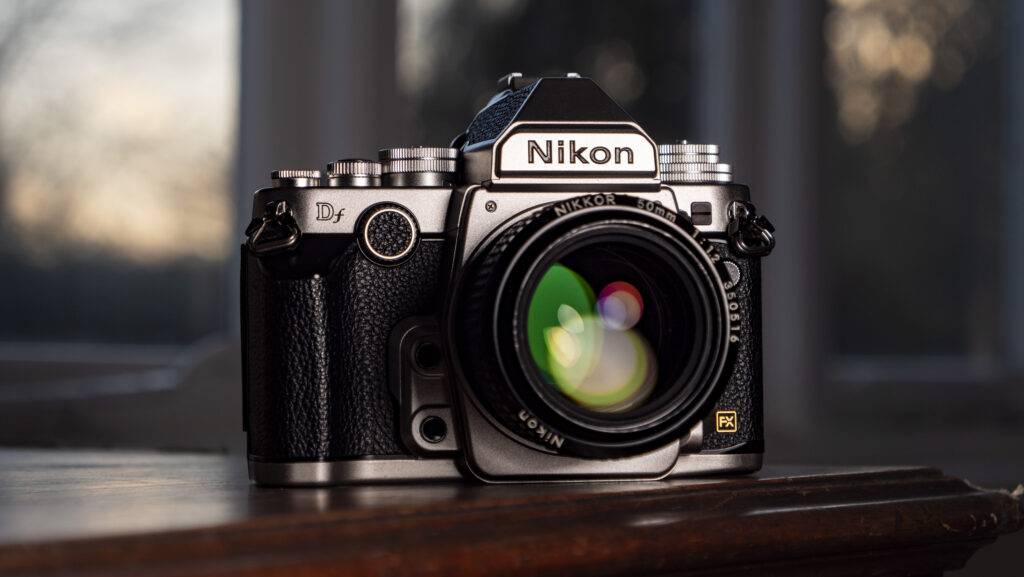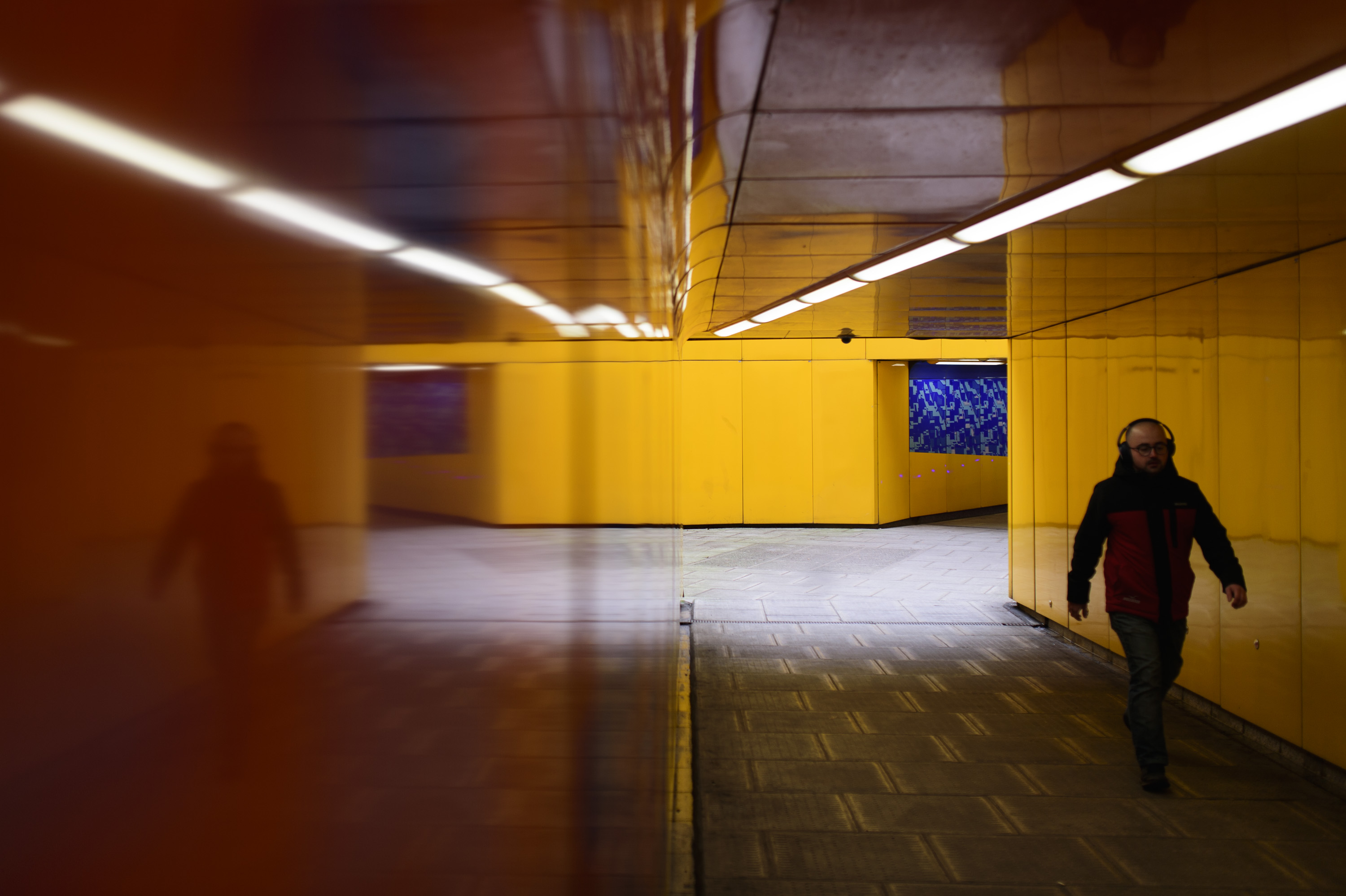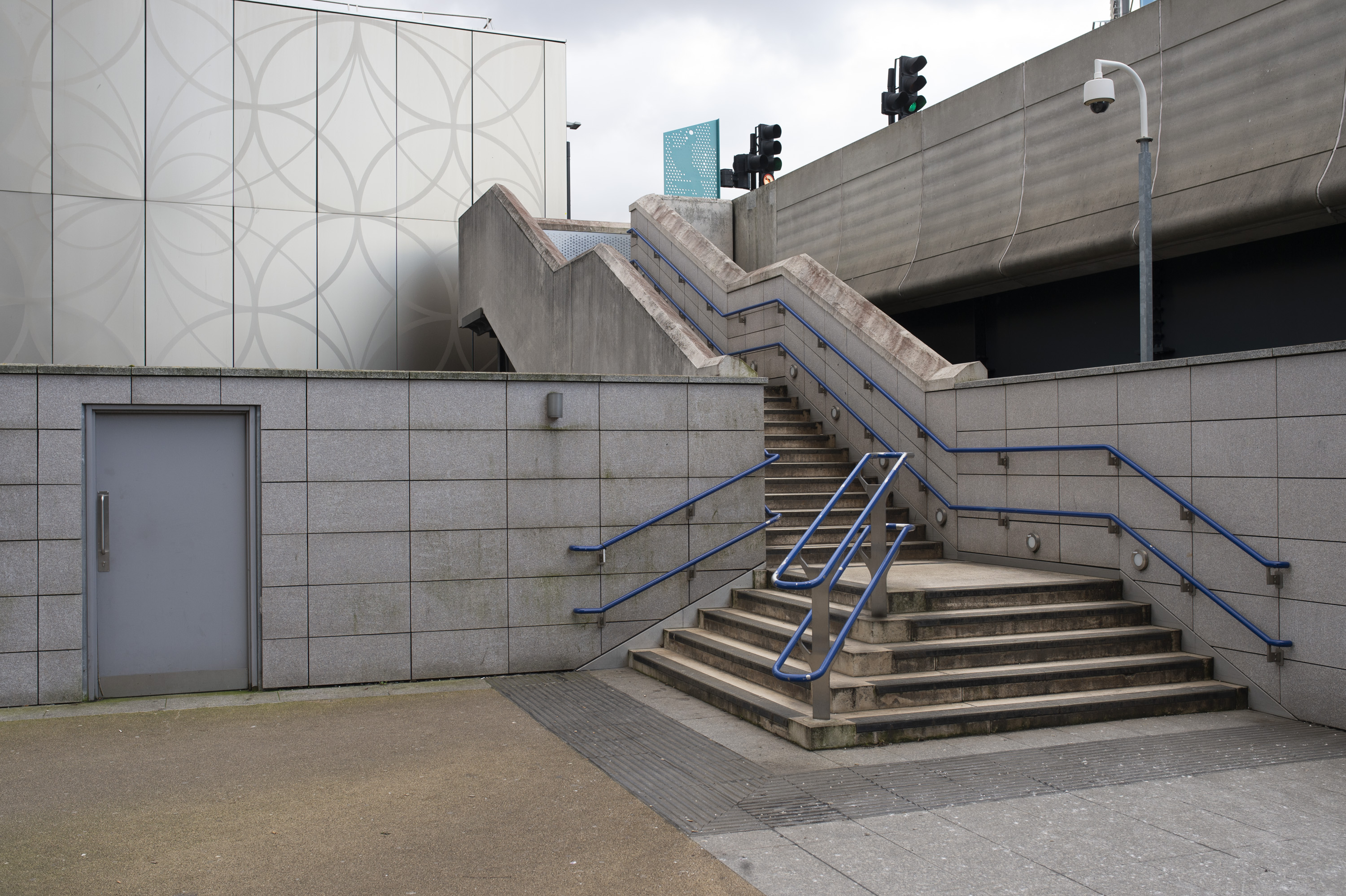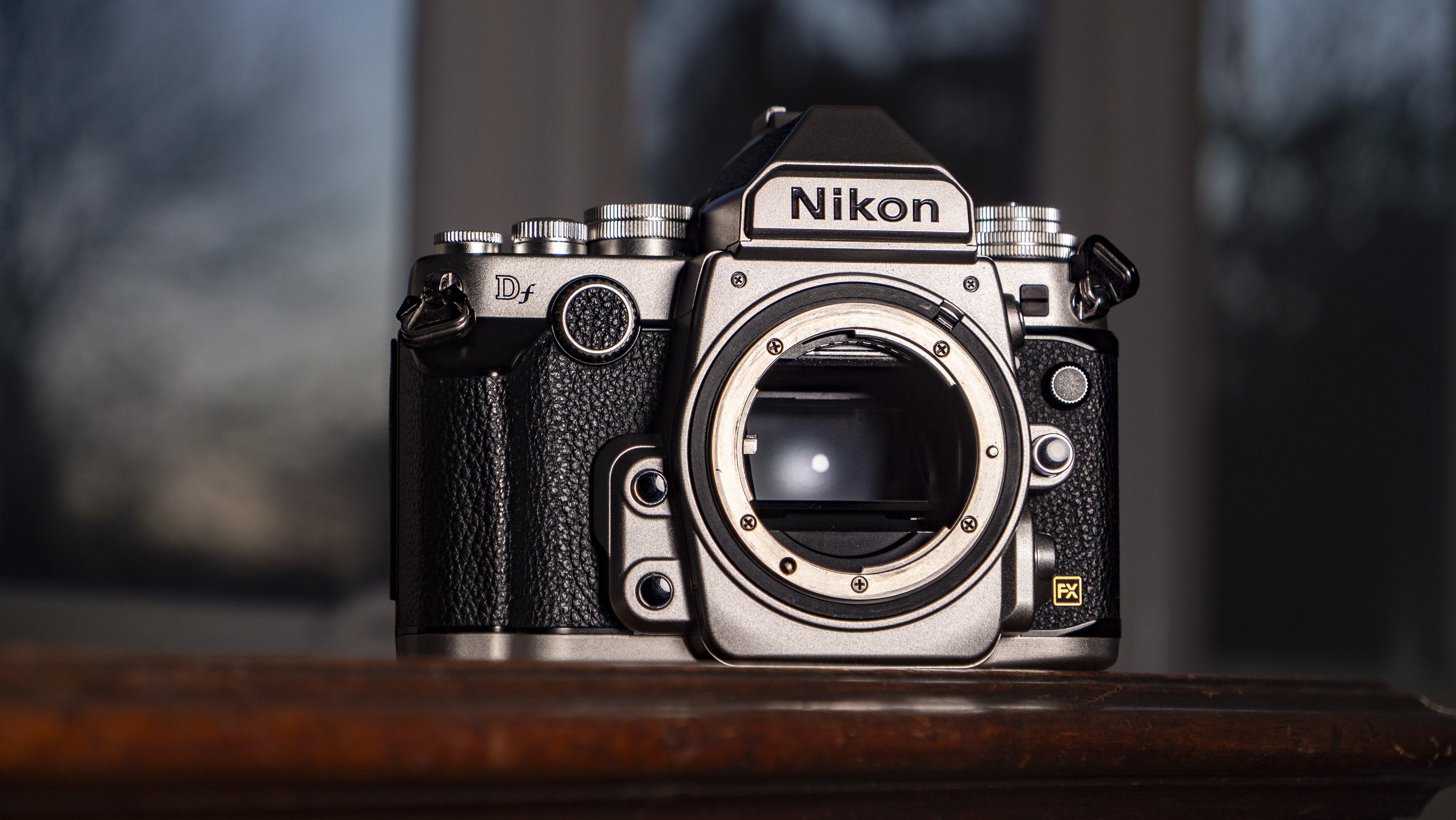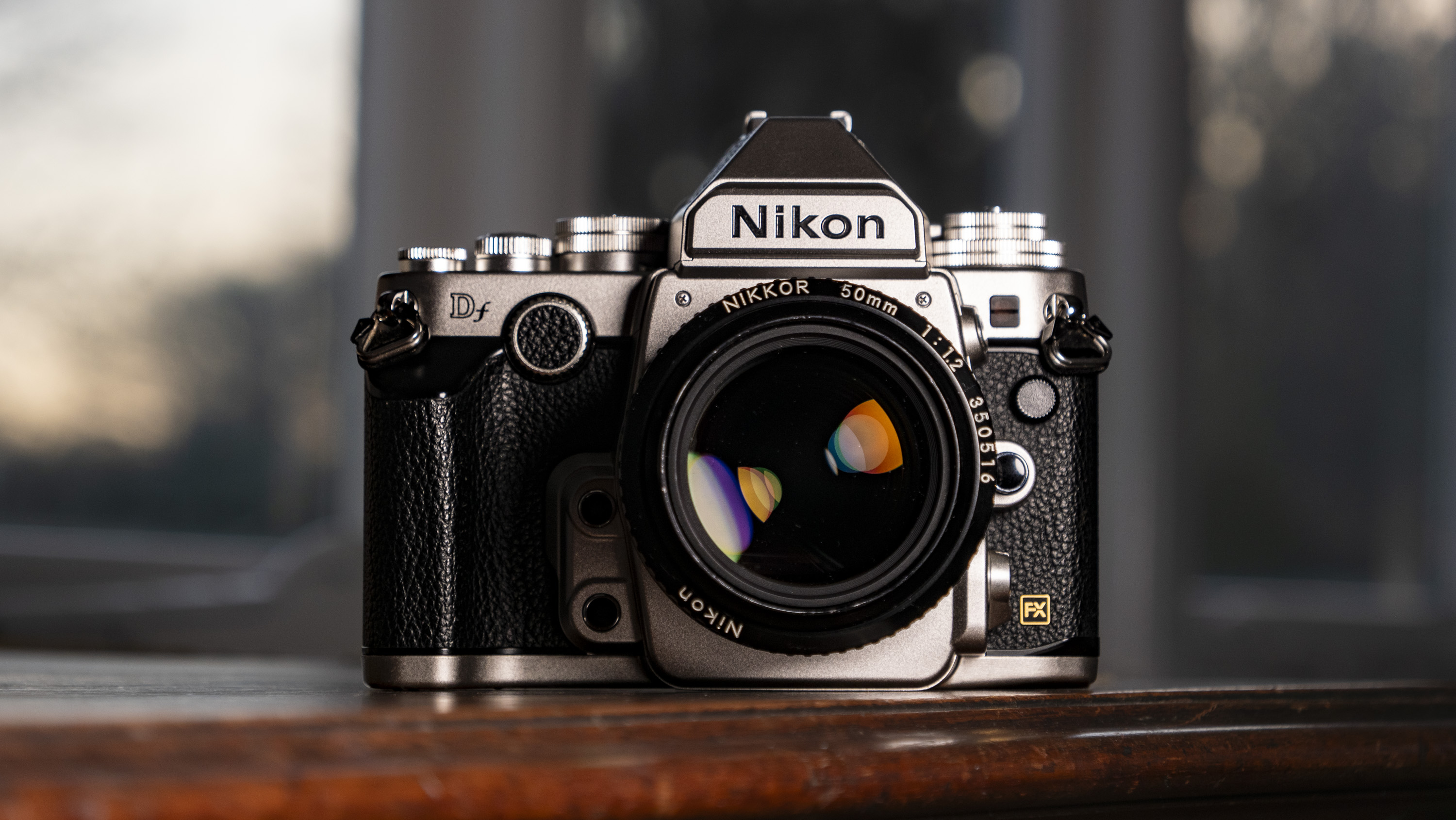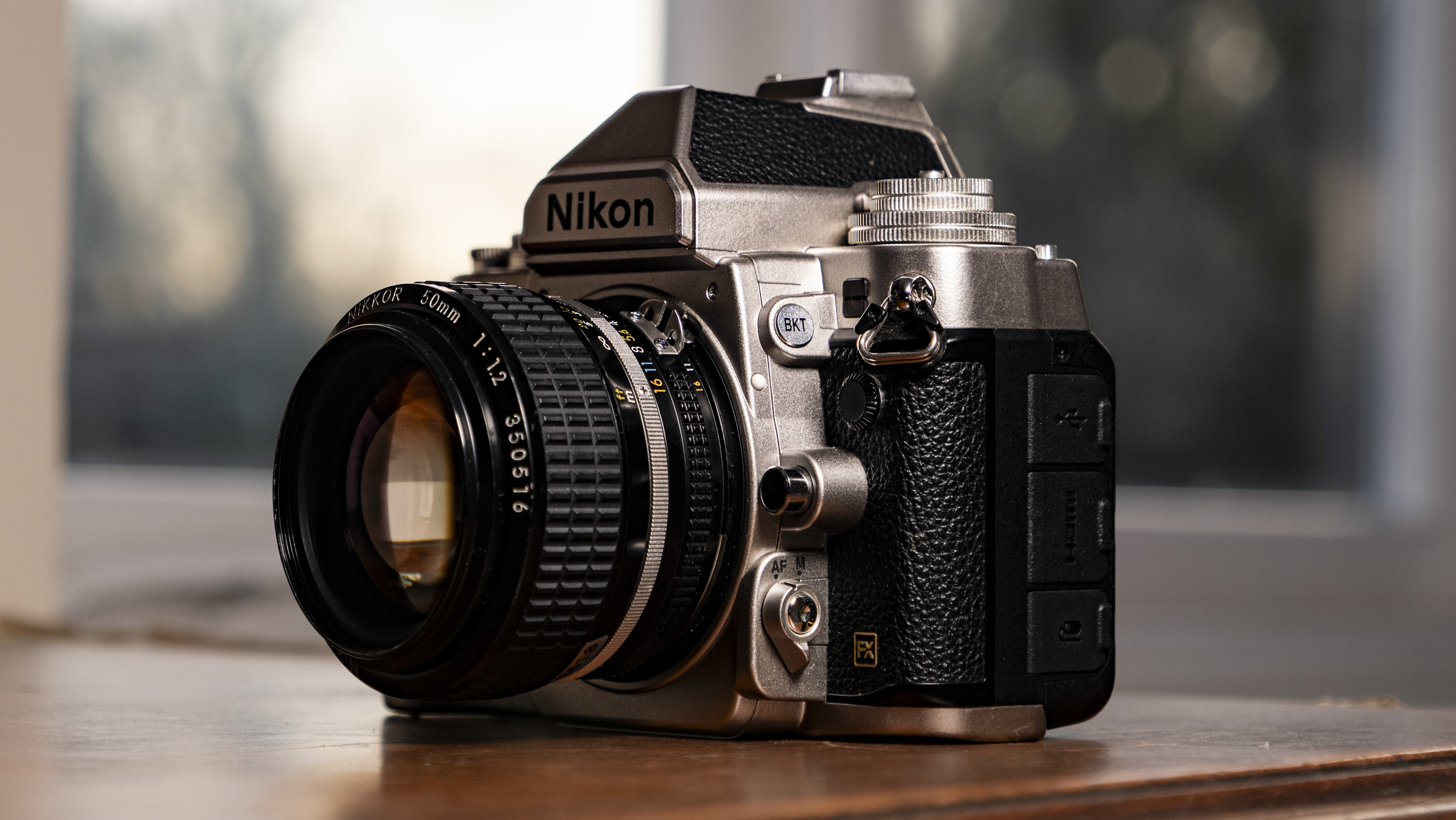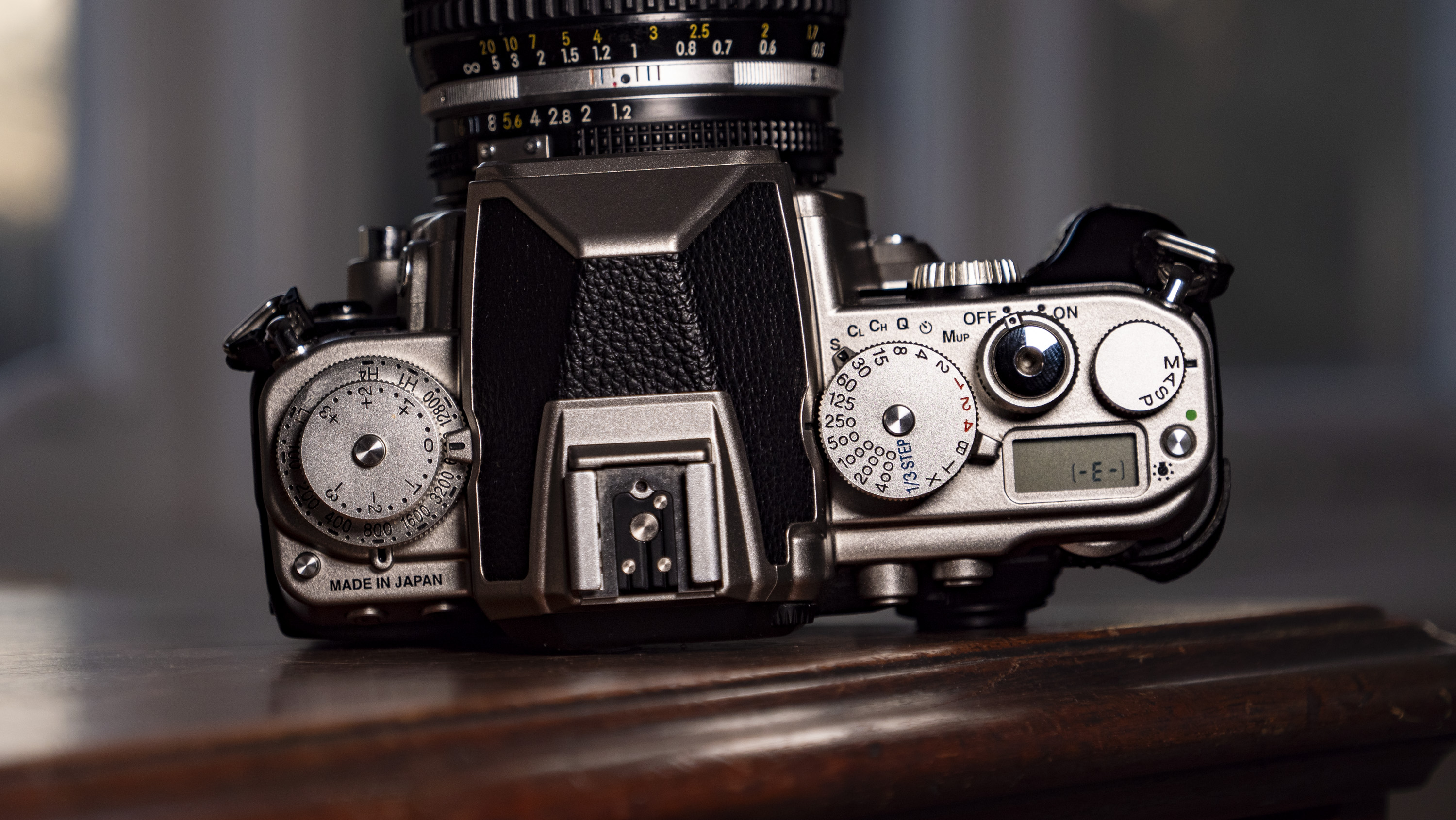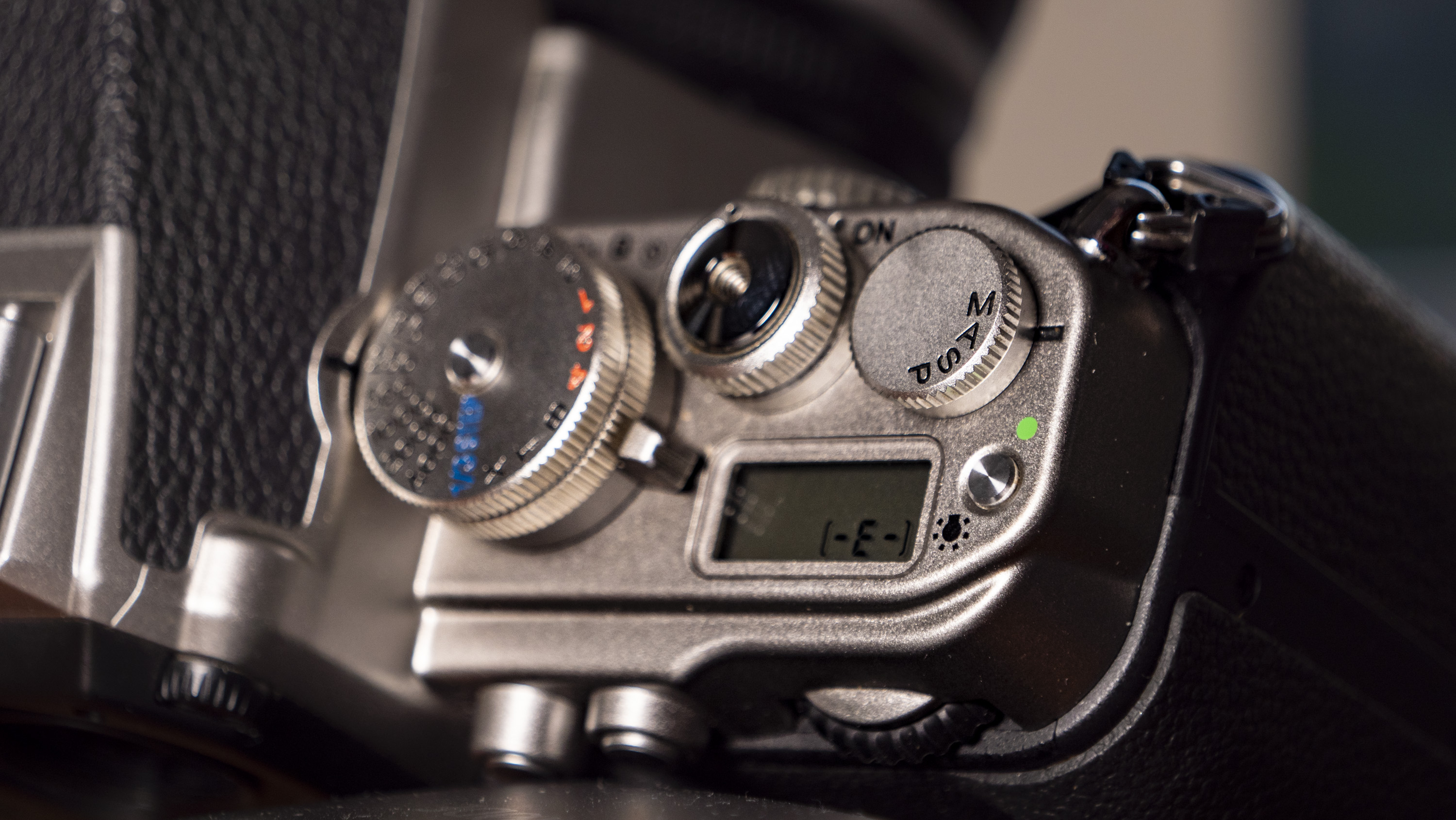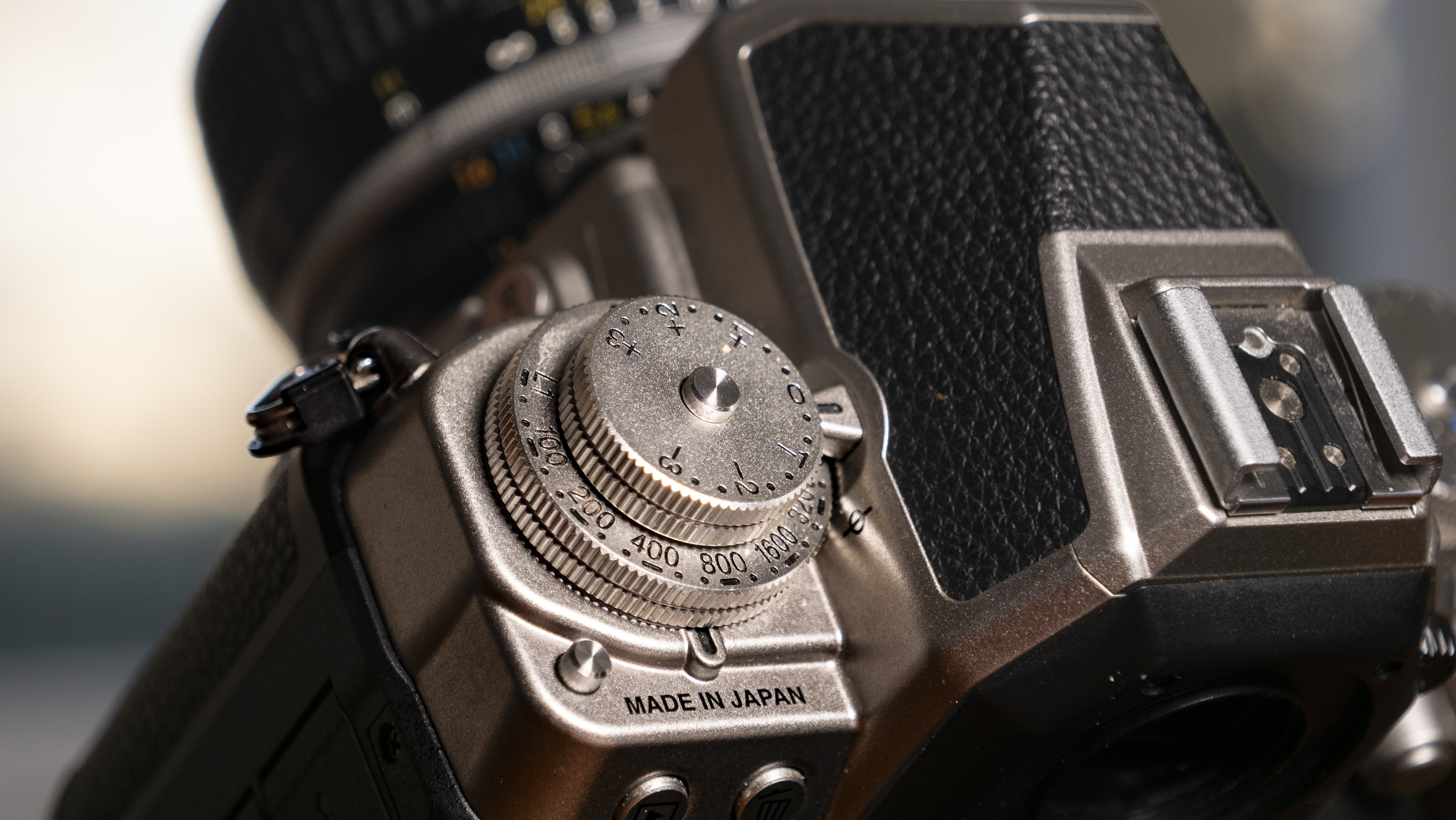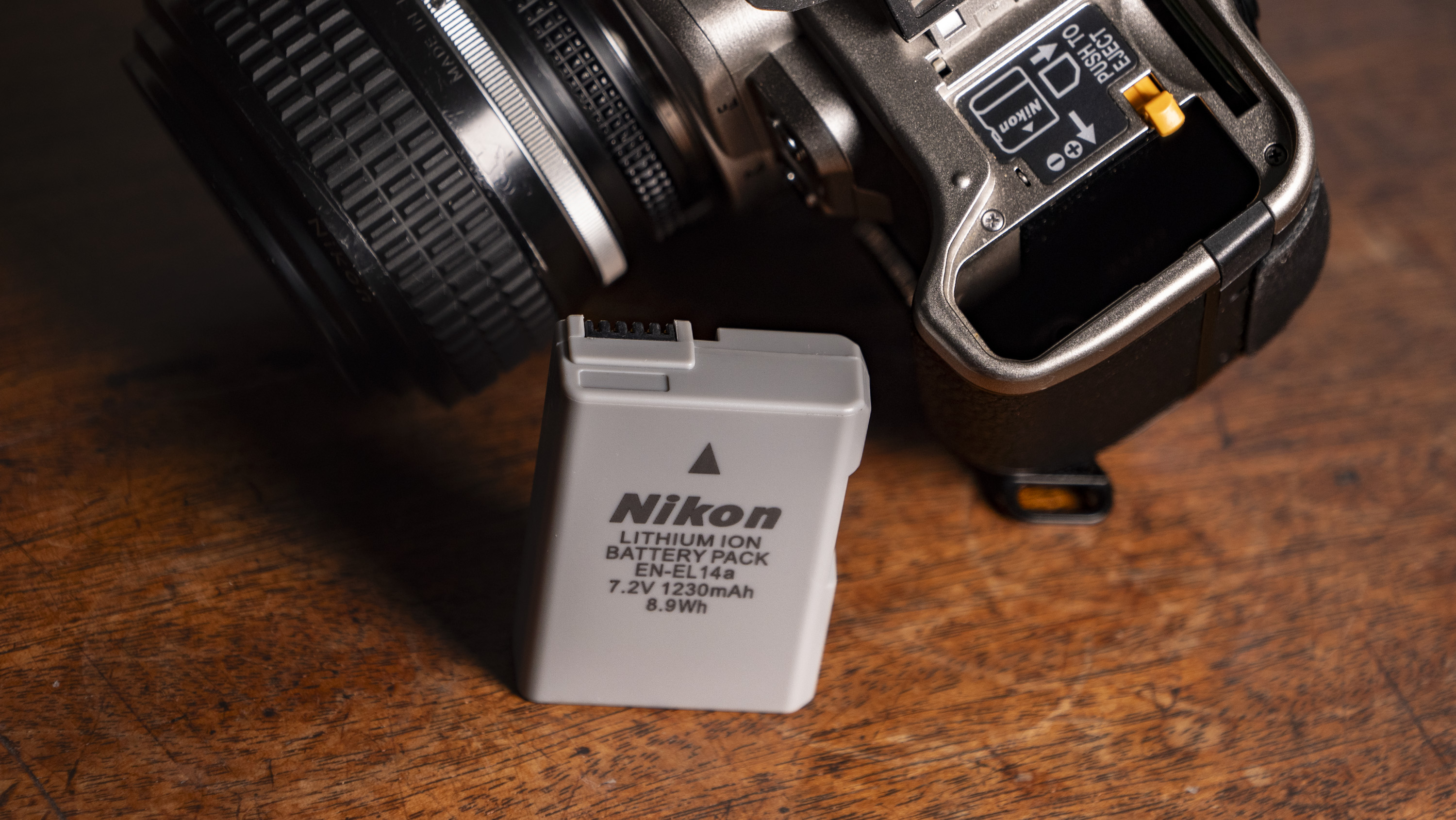While retro digital cameras are still popular, it’s time to move away from the numerous classic mirrorless models equipped with contemporary features from brands like Fujifilm and OM System. Instead, consider the Nikon Df.
Introduced in 2013, the Df stands out as a unique DSLR, inspired by Nikon’s classic analog SLR cameras from years gone by—think of models like the Nikon FM2.
In terms of size and design, it’s bulkier than today’s sleek mirrorless options, like the 2023 Nikon Zf, but among DSLRs, it is relatively compact and offers a standout feature that accentuates its vintage charm.
That defining feature is its vibrant optical viewfinder. Unlike modern mirrorless cameras like the Nikon Zf, Fujifilm X-T50, and OM System OM-3 that rely on electronic viewfinders, the Df offers an authentic retro experience that goes beyond just this signature element.
If you’re in the market for a secondhand model, expect to pay around $950-$1,250 / £850-£1,150, depending on its condition, from trusted retailers like MPB (who generously provided the camera for this review). It’s my top retro choice for 2025, and here are five reasons why.
Simplicity is Key
The Nikon Df has its share of limitations, but I believe these very limitations enhance its charm. This camera embraces its vintage vibe beautifully.
For instance, the Df doesn’t support video recording at all. This aligns perfectly with its retro essence—after all, when did analog SLRs ever shoot video? Yes, other modern cameras may offer video capabilities, but the Df focuses exclusively on photography, which significantly streamlines its menu system.
If video is what you’re after, other DSLRs and mirrorless models excel in that area. The Df is purely for photography, and that’s my second reason to love it.
Next, the Nikon Df features a full-frame sensor that produces 16MP images—exactly the same sensor found in the professional Nikon D4 sports DSLR. While this resolution might seem low by current standards, the upside is the excellent low-light performance, thanks to its ISO sensitivity range of 100-12,800, which can be expanded to ISO 50-204,800. Personally, I really enjoy the aesthetics of photos captured with the Df. You can check out some examples above.
Another point to note is the single card slot, which may disappoint some users. However, for those accustomed to film cameras, limited capacity is not new; you wouldn’t load multiple rolls at once! I actually appreciate this constraint—I’m reliant on one SD card, no matter if it fails or not. And just to clarify, card failures are quite uncommon, and risks can be reduced by regularly formatting the active memory card (but make sure to back up your images first!).
Truly Vintage Feel
The Df stands out from other cameras due to the exposure dials located on its top plate; one for shutter speed, one for ISO, and one for exposure compensation (see the gallery below). These dials not only add to the camera’s vintage aesthetic but also encourage photographers to take manual control over exposure settings, promoting a better understanding of the fundamentals that many other DSLRs fail to highlight. While several retro mirrorless cameras offer similar features—like the Nikon Zf—this remains a unique aspect of the Df, and it’s one of the reasons I love it.
The Nikon Df excels in encouraging a leisurely approach to photography.
A unique feature of the Df that is absent in many of Nikon’s more feature-rich DSLRs is its ability to work with vintage non-AI lenses (those from before 1977) alongside modern Nikon lenses. This compatibility means you can easily attach an F-mount analog SLR lens with aperture adjustments to the Df, and it operates seamlessly. This is a capability no other Nikon DSLR possesses, and it rounds up my six main reasons for favoring it.
I used the Nikon Df with several of my own modern F-mount lenses suited for Nikon DSLRs, including the Sigma 35mm f/1.4 DG HSM Art and Nikkor 50mm f/1.8 G, in addition to older manual focus lenses like the Nikon Ai-S Nikkor 50mm f/1.2 from 1981. Knowing that almost any Nikon F-mount lens, including vintage options, will function perfectly gives me the motivation to experiment with some unusual lenses from earlier eras.
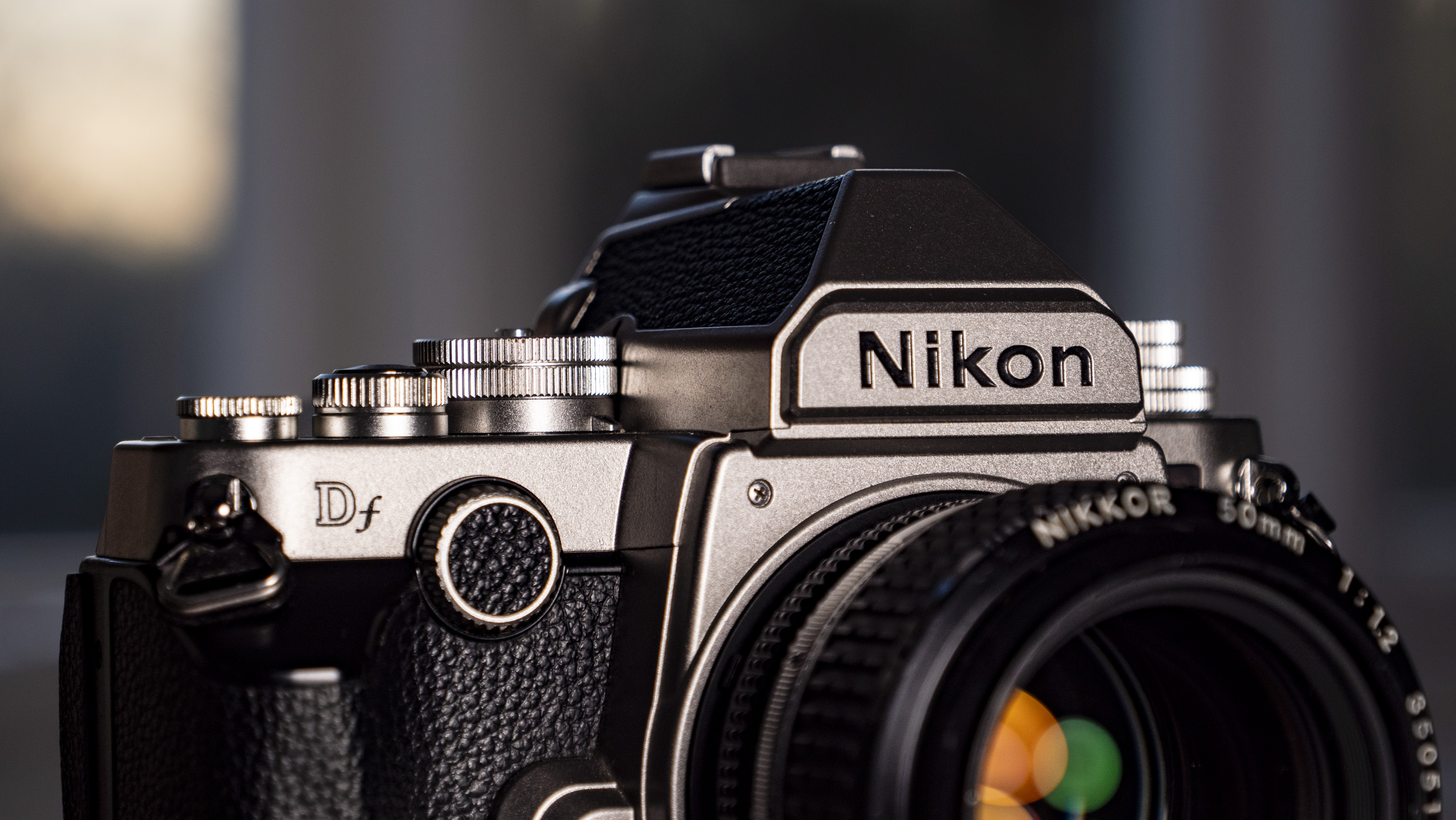
Despite its nostalgic charm, the Nikon Df is a modern digital SLR that boasts various contemporary features. It employs the same 39-point autofocus system found in the Nikon D600 and can shoot at speeds of up to 5.5 frames per second, saving images onto an SD card. Remarkably, the compact 1,230mAh battery outlasts the larger battery used in the Nikon D800.
However, what truly distinguishes the Nikon Df is how it invites photographers to slow down and truly savor the craft. Like other vintage-style cameras, its design is ideally suited for use with compact, fast aperture prime lenses, making it a perfect everyday camera.
For street and portrait photography, the Df shines brilliantly, and I can easily envision it serving as my go-to backup camera when I want to relish photography and enhance my skills and technical expertise. I can’t quite make the same case for my Nikon D800, which is why the Df stands out as an exceptional choice. What are your thoughts – would you consider purchasing a DSLR from 2013 today? Share your views in the comments below.

